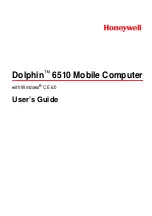
www.javad.com
9
Operating at Ultra High Frequency Band
LMR400 operates in UHF frequency band covering both licensed and unlicensed frequencies. The following
are its key benefits:
Operating in UHF frequency band will provide a non-line of sight connection.
User selectable operation mode (licensed or unlicensed mode) is a feature, which makes LMR400 system
suitable for both licensed and unlicensed markets.
Relatively low cost associated with installation equipment compared to the licensed wireless bands,
since no capital is required to purchase spectrum rights.
Single radio system covers the whole UHF frequency band from 406 to 470 MHz;
User selectable channel spacing (25 kHz, 20 kHz, 12.5 kHz or 6.25 kHz);
User selectable Output power level for Base (30mW/15dBm and 1W/30dBm);
Adaptive RF Power control used by Remotes minimizes the transmit power levels and interference to
co-channel and adjacent channel users. It also reduces the Remote’s power consumption.
Modulation Technique
The design is based on high-level modulation techniques which include:
Modulation/ Channel Spacing
6.25 kHz
12.5 kHz
20 kHz
25 kHz
DBPSK – Differential Binary Phase Shift Keying
2.4 kbps
4.8 kbps
7.5 kbps
9.6 kbps
DQPSK – Differential Quadrature Phase Shift Keying
4.8 kbps
9.6 kbps
15 kbps
19.2 kbps
D8PSK – Eight Phase Shift Keying
7.2 kbps
14.4 kbps
22.5kbps
28.8 kbps
D16QAM – Sixteen Quadrature Amplitude Modulation
9.6 kbps
19.2 kbps
30 kbps
38.4 kbps
GMSK – Minimal Shift Keying with Gaussian Filtering
2.4 kbps
4.8 kbps
7.5 kbps
9.6 kbps
4FSK- Four Level Frequency Shift Keying
N/A
9.6 kbps
15.0 kbps
19.2 kbps
The following are its key benefits:
• Provides an excellent spectral efficiency (up to 2.3 bps/Hz for D16QAM), it is better than any product avail-
able on the market.
• FEC coding scheme used with GMSK and 4FSK modulations is based on Hamming Code known as Perfect
Codes. Although Hamming Codes are not very powerful, they are easy to implement and do not require
much DSP resources.
• More powerful Reed-Solomon FEC coding scheme used with ArWest proprietary frame format improves
the tolerance to interference and ensures the highest link quality at distances range higher than 8 miles (13
km) and roaming speeds of up to 60 mph (96 km/h).
Media Access Control (MAC)
The following Media Access protocols are available for LMR400 modem:
• Simplex protocols (Simplex Base, Simplex Remote, and Repeater) are developed primarily for GNSS ap-
plications.
• Half Duplex protocols (Half Duplex Base, Half Duplex Remote and Repeater) are the alternative to Simplex
protocols that provide bidirectional link with the dynamic bandwidth allocation.
Note:
Repeater decreases the user data rate. The user data rate in the link with the repeaters is equal to C /[(n+1]), where C is a link
throughput determined by the modulation technique and n is a number of repeaters in the chain. Half duplex Base, Half duplex
Remote and repeater are not supported in current release.
• Sleep mode is an investment provided by MAC sub-layer that provides additional power saving. The
wakeup from Sleep mode is user selectable either by an internal real-time clock, or by an external con-









































